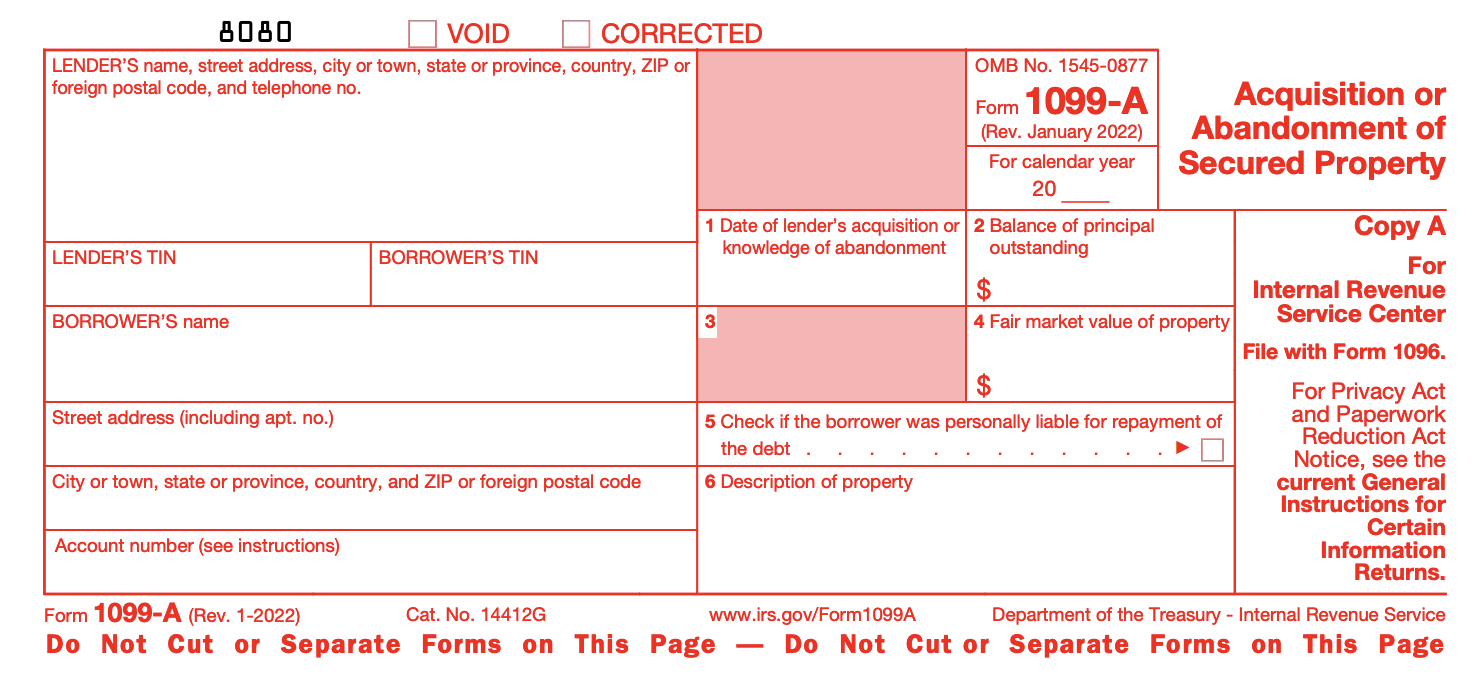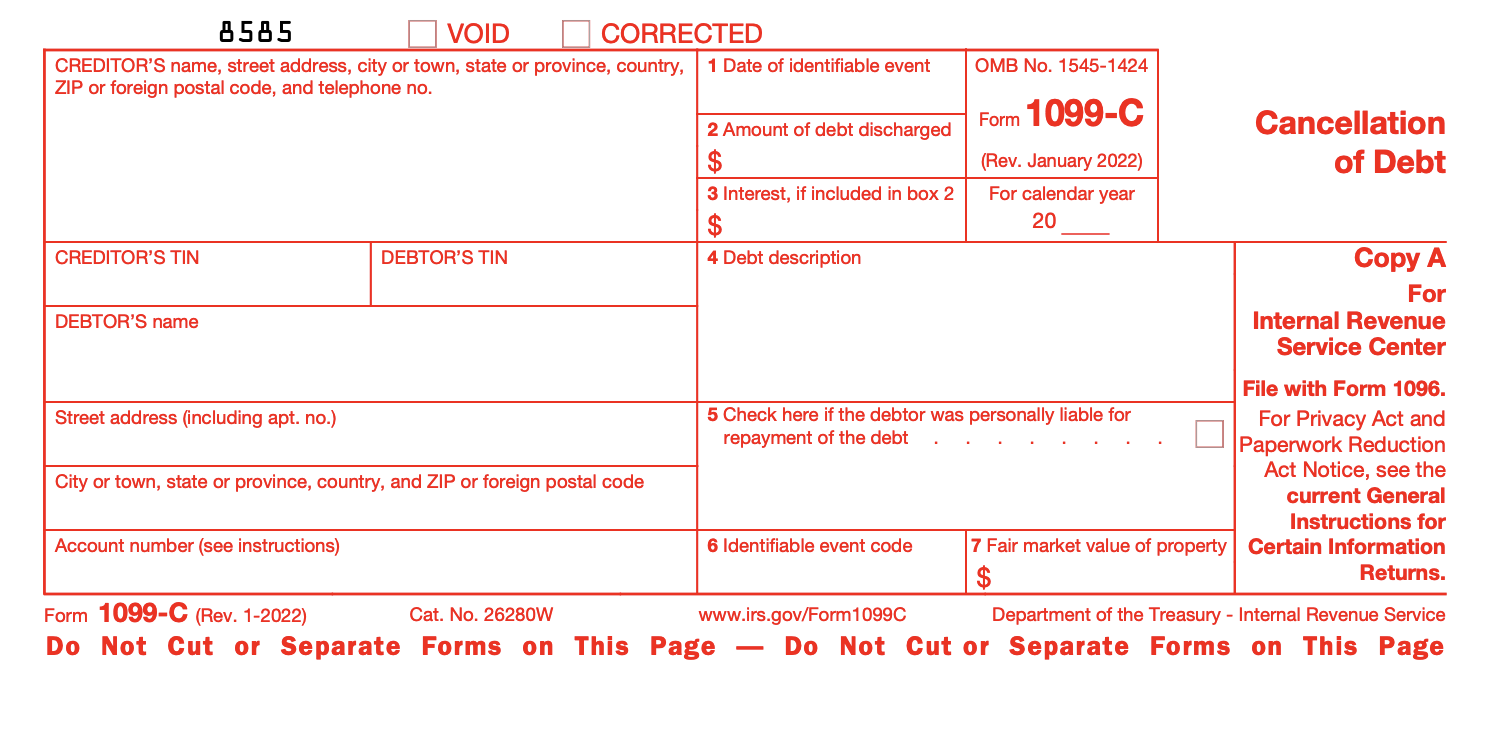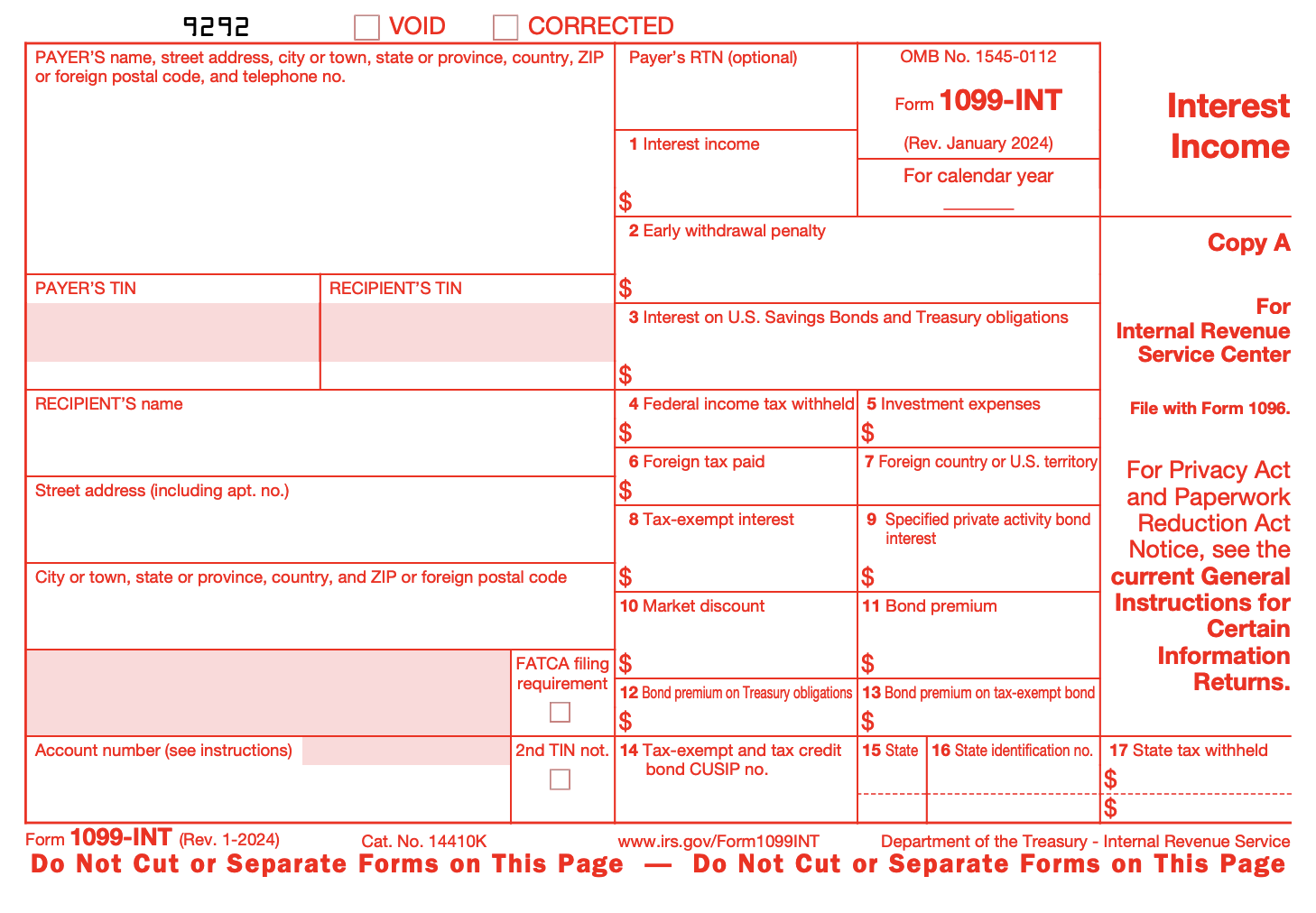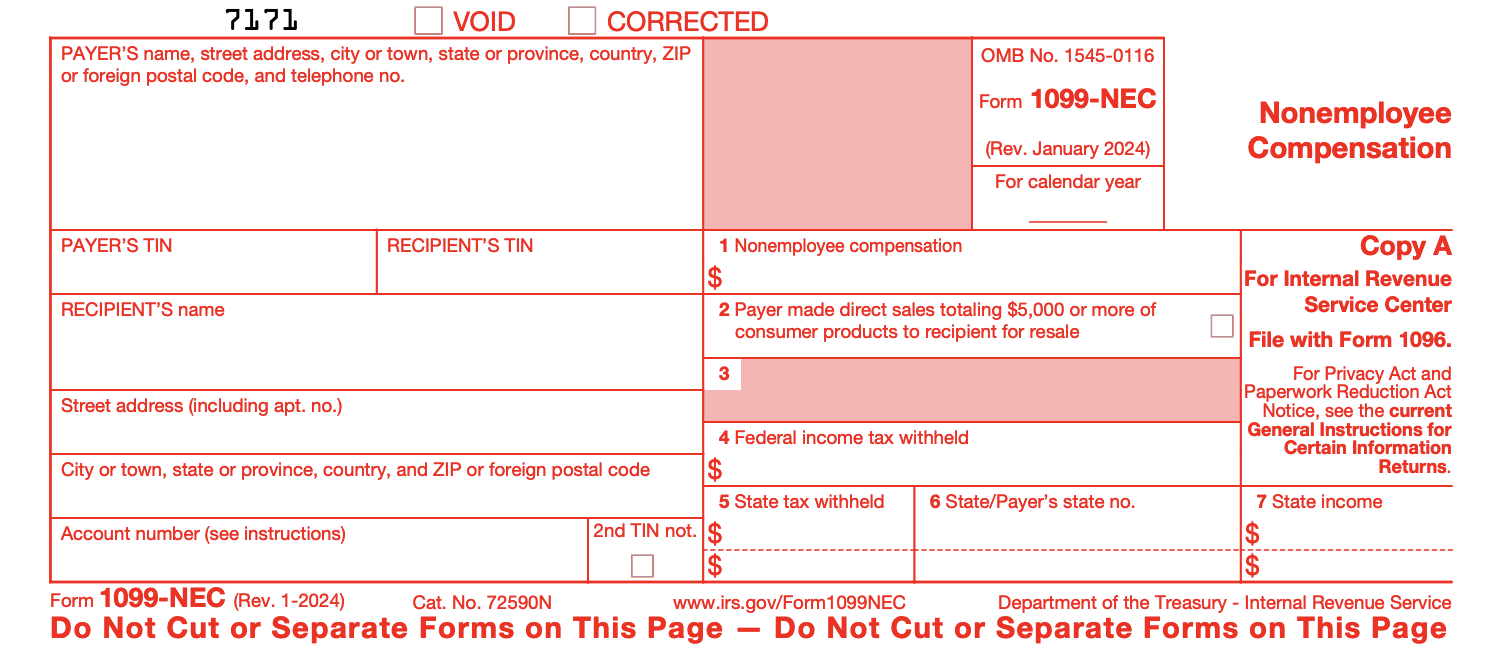1099 forms are essential for reporting non-employment income to the IRS. Understanding the different types of 1099 forms is crucial for businesses and individuals to ensure accurate reporting and avoid penalties.
These forms cover a variety of income types, including contractor payments, interest income, dividends, and canceled debts. In this blog, we will provide an overview of 1099 forms, highlighting key types of 1099 forms like 1099-NEC, 1099-C, and 1099-DIV, and explain when and why they should be filed. Stay informed to ensure compliance with IRS regulations.
What Is an IRS 1099 Form?
The 1099 forms are a set of IRS documents designed to report income earned outside of traditional employment. These forms are commonly sent to independent contractors, freelancers, and self-employed individuals who receive payments from sources other than an employer.
Each type of 1099 form corresponds to a different income category, such as freelance payments, interest, or dividends. If a person has multiple streams of non-employment income, they may receive several 1099 forms at the end of the year.
1099 forms serve crucial purposes like:
- Reporting income earned outside traditional employment, such as freelance work or contract jobs.
- Helping the IRS track income for individuals who are not subject to traditional payroll tax withholding.
- Different kinds of 1099 forms are designed to report specific types of income, such as dividends, interest, or payments to contractors.
- Ensures transparency and reduces the potential for tax evasion by documenting all income sources.
- Provides recipients with the necessary information to file their taxes correctly and avoid penalties.
Now that we’ve covered the basics of 1099 forms, let’s dive deeper into the specific forms, starting with Form 1099-A, which reports the acquisition or abandonment of secured property.
Also read: What is a Compliance Platform: Key Features and Business Benefits
Form 1099-A: Acquisition or Abandonment of Secured Property

- Purpose: This form is used to report the acquisition or abandonment of secured property, typically in cases of foreclosure or repossession. Want to go deeper into what this means for you? Learn more about Form 1099-A here.
- Who Files It: Lenders, financial institutions, or creditors who acquire secured property (like real estate or vehicles) or when a borrower abandons the property.
- Key Details:
- Box 1: Date of abandonment or acquisition.
- Box 2: Fair market value (FMV) of the property.
- Box 3: Whether the borrower was personally liable for the debt.
- Box 4: Description of the property.
- Box 5: Outstanding principal balance of the loan.
- When to File: File this form when a borrower defaults on a loan, the lender takes possession of the property or the borrower abandons it.
- Tax Implications: The borrower may need to report the transaction as income if the debt is forgiven, and Form 1099-C may also be required.
In addition to property acquisitions, other financial transactions also require specific 1099 forms. Let’s move on to Form 1099-B, which covers proceeds from broker and barter exchange transactions.
Form 1099-B: Proceeds from Broker and Barter Exchange Transactions

- Purpose: This form includes critical details such as the sale price, cost basis, and transaction date, helping you determine capital gains or losses for tax purposes. Need help filing this form? Learn more about it here.
- Who Files It: Brokers, barter exchanges, or financial institutions facilitating such transactions.
- Key Details:
- Box 1a: Description of the property sold.
- Box 1b: Date of the sale.
- Box 1c: Gross proceeds from the sale.
- Box 1d: Cost or other basis of the property (if reported to the IRS).
- Box 1e: Type of gain or loss (short-term or long-term).
- When to File: File this form for each transaction involving the sale of securities, stocks, or other assets.
- Tax Implications: The taxpayer must report capital gains or losses on their tax return based on the information provided.
If you’ve had any debts canceled during the tax year, you will need to file another type of 1099 form. Let’s now look at Form 1099-C, which reports the cancellation of debt.
Form 1099-C: Cancellation of Debt

- Purpose: This form reports the cancellation of debt by a financial entity, typically when $600 or more of a debtor’s debt is forgiven. Find more insights about form 1099-C here.
- Who Files It: Lenders, credit card companies, or financial institutions that cancel or forgive debt.
- Key Details:
- Box 1: Amount of debt canceled.
- Box 2: Date of cancellation.
- Box 3: Interest included in the canceled debt.
- Box 4: Description of the debt.
- Box 5: Whether the borrower was personally liable.
- When to File: File this form when a $600 or more debt is canceled.
- Tax Implications: Canceled debt is generally considered taxable income unless an exclusion applies (e.g., bankruptcy or insolvency).
In addition to canceled debts, other forms of income, like dividends, also need to be reported. Let’s explore Form 1099-DIV, which is used to report dividends and distributions.
Form 1099-DIV: Dividends and Distributions

- Purpose: This form is used to report dividends and distributions paid to investors, typically by banks, mutual funds, or other financial institutions. It includes details essential for accurately reporting investment income on your tax return. Explore further for more information here.
- Who Files It: Financial institutions, mutual funds, or corporations that pay dividends or distributions.
- Key Details:
- Box 1a: Total ordinary dividends.
- Box 1b: Qualified dividends (eligible for lower tax rates).
- Box 2a: Total capital gain distributions.
- Box 3: Non-dividend distributions.
- Box 4: Federal income tax withheld.
- When to File: File this form for payments of $10 or more in dividends or distributions.
- Tax Implications: Dividends are taxable income, but qualified dividends may be taxed at a lower rate.
Moving from dividends to interest income, Form 1099-INT reports individual interest payments. Here’s how this form comes into play.
Form 1099-INT: Interest Income

- Purpose: This form reports interest income paid to individuals, typically by banks, credit unions, or other financial institutions. For more information, click here.
- Who Files It: Financial institutions or payers of interest income.
- Key Details:
- Box 1: Interest income.
- Box 2: Early withdrawal penalty (if applicable).
- Box 3: Interest on U.S. savings bonds and Treasury obligations.
- Box 4: Federal income tax withheld.
- Box 8: Tax-exempt interest.
- When to File: File this form for interest payments of $10 or more.
- Tax Implications: Interest income is generally taxable, but some types (e.g., tax-exempt interest) may not be.
Lastly, for businesses that have paid nonemployee compensation, Form 1099-NEC is crucial. Let’s wrap up our discussion by closely examining this form.
Form 1099-NEC: Nonemployee Compensation

- Purpose: This form reports payments made to nonemployees, such as independent contractors or freelancers, for services rendered. Discover more details here.
- Who Files It: Businesses or individuals who pay $600 or more to a nonemployee for services.
- Key Details:
- Box 1: Non-employee compensation.
- Box 4: Federal income tax withheld (if applicable).
- Box 5: State tax withheld.
- Box 6: State identification number.
- When to File: File this form for payments of $600 or more to a nonemployee.
- Tax Implications: Recipients must report this income on their tax return and may be subject to self-employment taxes.
Having covered the main types of 1099 forms, it’s clear that each form serves an essential purpose in reporting various types of non-employment income. Let’s now summarize the importance of filing these forms correctly.
Conclusion
Different 1099 forms play a vital role in ensuring accurate income reporting for different sources, from freelance earnings to dividend payouts. Filing these forms correctly is essential for staying compliant with IRS regulations, which helps businesses and individuals avoid costly penalties or audits. By keeping track of the types of 1099 forms and their specific requirements, you ensure that your tax filings are timely and precise.
Given the complexity of these forms, it’s recommended to consult with a tax professional who can provide expert guidance on proper filing. Commenda can help streamline the entire process, offering tools and support to simplify your tax reporting and ensure full compliance. Don’t risk errors—book a free demo today and get your 1099 forms in order with ease!




